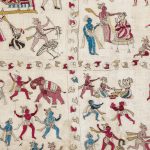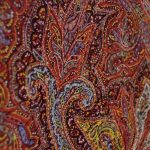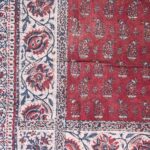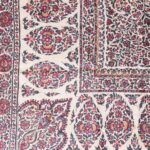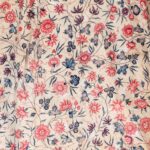A partnership between Gawthorpe Textiles Collection and Dr Rohini Arora to give an in depth look at two rare and precious examples of embroidery from the Chamba region of India.
View moreThis beautiful textile is an example of an amli shawl, a technique where small woven pieces are hand sewn together and then further embellished with embroidery. Every step of the making process was labour intensive and required high skill levels meaning that amli shawls were highly prized luxury items. Unlike many other styles of shawl […]
View moreFinely woven Kashmir wool shawls from India became status symbols in Europe in the 18th century, and were considered the height of fashion up until the 1870s. As highly desirable commodities, factory-owners in Europe were quick to capitalise on their appeal and employed new industrial machine weaving methods to maximise profits. Towns such as Norwich, […]
View moreA number of print methods are evident on this piece, which was likely created in India or Iran for the European market. The central square of the front is block printed with a deep red background and boteh motifs, while the surrounding intricate floral border is created with resist dyeing and either block printing or […]
View moreThe front of this cloth features a heavily patterned floral central square surrounded by several narrower borders and an intricate edging of ‘Paisley’ boteh or buta motifs. These heavily stylised teardrop or pinecone shapes originated in Persian design but also became popular in India, particularly in Kashmiri shawls. The English term for the pattern comes […]
View moreA skirt or petticoat made from smooth cotton calico and lined throughout with a soft and coarsely woven cotton. The overall floral pattern is hand block printed and dyed using madder and indigo dyes with simple yet effective use of colour shading and layering to give a variety of colour tones using just a few […]
View moreA Chamba rumal of cotton muslin embroidered in colourful silk threads with a design depicting four figures on horseback and floral borders. Chamba rumal embroideries take the first part of their name from the small town of Chamba in the Himachal Pradesh region of India and began being produced there in the 17th century. The […]
View more